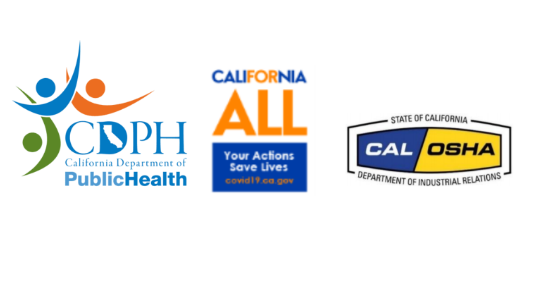Title Page
-
Conducted on
-
Prepared by
-
Location
Contents of Written Worksite Specific Plan
-
The person(s) responsible for implementing the plan.
-
A risk assessment and the measures that will be taken to prevent spread of the virus.
-
Training and communication with employees and employee representatives on the plan.
-
A process to check for compliance and to document and correct deficiencies.
-
A process to investigate COVID-cases, alert the local health department, and identify and isolate close workplace contacts of infected employees until they are tested.
-
Update the plan as necessary to prevent further cases.
Topics for Employee Training
-
Information on COVID-19, preventing spread, and who is especially vulnerable. <br>https://www.cdc.gov/coronavirus/2019-ncov/index.html
-
Self-screening at home, including temperature and/or symptom checks using CDC guidelines.<br>https://www.cdc.gov/coronavirus/2019-ncov/symptoms-testing/symptoms.html
-
The importance of not coming to work if employees have a frequent cough, fever, difficulty breathing, chills, muscle pain, headache, sore throat, the recent loss of taste or smell, or if they or someone they live with has been diagnosed with COVID-19.
-
When to seek medical attention.
-
The importance of hand washing.
-
The importance of physical distancing, both at work and off work time.
-
Proper use of cloth face covers
Individual Control Measures and Screening
-
Symptom screenings and/or temperature checks.
-
Encourage workers who are sick or exhibiting symptoms of COVID-19 to stay home.
-
Encourage frequent handwashing and use of hand sanitizer.
-
Provide disposable gloves to workers using cleaners and disinfectants when required. Consider gloves as a supplement to frequent handwashing for other cleaning, tasks such as handling commonly touched items or conducting symptom screening.
-
Strongly recommend use of cloth face covers.
Cleaning and Disinfecting Protocols
-
Perform thorough cleaning in high traffic areas and frequently disinfect commonly used surfaces.
-
Clean and sanitize touchable surfaces and shared equipment between shifts or users, whichever is more frequent.
-
Provide hand sanitizer, sanitizing wipes and other sanitary supplies and locate them where they are readily available to workers.
-
Ensure that sanitary facilities stay operational and stocked at all times.
-
Use products approved for COVID-19 on the Environmental Protection Agency (EPA)-approved list and follow product instructions and Cal/OSHA requirements.<br>https://www.epa.gov/pesticide-registration/list-n-disinfectants-use-against-sars-cov-2
-
Clean delivery vehicles and equipment before and after delivery, provide sanitation materials during deliveries and identify alternative restroom locations on routes
-
Provide working time for workers to implement cleaning practices before and after shifts; consider hiring third-party cleaning companies.
-
Inspect deliveries and perform disinfection measures where appropriate prior to storing goods in warehouses and facilities.
-
Consider upgrades to improve air filtration and ventilation.
Physical Distancing Guidelines
-
Implement measures to physically separate workers by at least six feet using measures such as physical partitions or visual cues (e.g., floor markings, colored tape, or signs to indicate to where workers should stand).
-
Minimize transaction time between warehouse employees and transportation personnel; perform gate check-ins and paperwork digitally, if feasible.
-
Adjust in-person meetings, if they are necessary, to ensure physical distancing.
-
Stagger employee breaks, in compliance with wage and hour regulations, to maintain physical distancing protocols.
-
Reconfigure, restrict or close breakrooms and create alternative space for breaks where physical distancing is possible.
Sign Off
-
Name and Signature
















